Did you know that B2B email marketing can be a highly effective way to connect with other businesses? With the right strategy in place, you can use email campaigns to generate new leads, share exciting product updates, and build lasting relationships with your target audience.
Whether you’re new to B2B email marketing or a seasoned pro, this guide will provide actionable tips and insights to help you take your email marketing to the next level. This article will show you the best practices to break through the clutter and create memorable B2B email marketing campaigns. We’ll cover everything from strategy and best practices to providing real-life examples to inspire your own campaigns. So buckle up and get ready to elevate your B2B marketing game!
What is B2B email marketing?
B2B (business-to-business) email marketing refers to one company promoting their products or service via email to another business or organisation. Think about it like a virtual sales pitch delivered straight to your inbox. It’s a strategic way of reaching out to potential buyers and educating them on how your products or services will solve their problems. By crafting personalised email campaigns and nurturing your leads, you can turn them into loyal customers who will be eager to do business with you again and again.
Benefits of B2B email marketing include:
- Targeted outreach: B2B email marketing allows you to send highly targeted messages to specific businesses or individuals based on their industry, job title, or behaviour.
- Cost-effective: Compared to traditional advertising methods, email marketing is a cost-effective way to reach potential customers. With the right strategy, you can achieve a high return on investment (ROI).
- Increased brand awareness: Consistent and valuable email campaigns can help establish your brand as a thought leader in your industry, and keep your business top of mind when potential customers are ready to make a purchase.
- Builds trust and credibility: By providing useful and relevant content, you can build trust with your audience and establish credibility as a knowledgeable resource in your industry.
- Measurable results: With the help of email marketing software, you can track the success of your campaigns with metrics such as open rates, click-through rates, and conversion rates. This data can help you make informed decisions and optimise your strategy for better results.
What is the difference between B2B and B2C email marketing?
One of the primary differences between B2B and B2C emails is the target audience. B2B emails are typically more informative, as they often address specific business needs or challenges when businesses market to other businesses. For example, software companies like ours market their products to other businesses. On the other hand, B2C emails are usually shorter and more focused on promoting products or special offers, as businesses market directly to customers. This is the case for retail companies like fashion clothing brands.
Personalisation is also crucial in both B2B and B2C email marketing, but the approach may differ. In B2B, personalisation may involve addressing the recipient by their professional title or including relevant industry news or insights. On the other hand, in B2C, personalisation may be more focused on the recipient’s first name and tailoring promotions or recommendations based on their previous purchases or browsing history.
Lastly, the types of content that appeal to B2B and B2C audiences can also differ. B2B audiences tend to respond well to case studies, whitepapers, and other informative content. While B2C audiences may prefer more visually appealing content like product photos or videos.
By understanding these differences, you can tailor your email marketing strategy to effectively reach and engage your intended audience, whether they are businesses or individual consumers.
Email marketing strategy for B2B:
Recent studies have shown that 78% of marketers have seen an increase in email engagement over the last 12 months. However, the challenge lies in standing out from the competition. With so many B2B marketers using email for lead generation, you need to do something different to get noticed. Here’s a few crucial steps to help you create a successful B2B email marketing strategy:
1. Create a buyer persona
Creating a buyer persona allows you to better understand your target audience’s challenges, pain points, and motivations. Research indicates that 90% of companies that use buyer personas have gained a better understanding of their buyers. By creating a detailed profile of your ideal customer, you can tailor your email marketing strategy to better resonate with your audience and increase the chances of conversion.
2. Segment your email list
Segmenting your email list based on specific customer criteria such as job title, industry, or behaviour can help you personalise your emails and deliver more targeted content to your subscribers. This can lead to higher open rates, click-through rates, and conversion rates, ultimately improving your email marketing ROI.
3. Plan your email campaigns in stages
To achieve the best results with your B2B email marketing campaigns, it’s important to plan your emails in stages. This involves creating a clear strategy, setting goals and objectives, and planning out the timing and content of each email. By taking a strategic approach, you can deliver more relevant and engaging content to your subscribers.
4. Make the most of templates
Email templates can save you time and effort while ensuring consistency in branding and messaging. By customising pre-designed email templates to fit your specific needs, you can streamline your email marketing efforts and focus on creating valuable content that resonates with your target audience.
B2B email marketing benchmarks
How can you know if your campaigns are performing well? One way to measure your success is to compare your results to industry benchmarks. Our monthly email marketing metric report provides the latest monthly stats by industry, so you can filter your search and compare how your business performs against competitors.
By comparing your results to these benchmarks, you can better understand how well your campaigns are performing and identify areas for improvement. Some factors that can affect your email marketing benchmarks include the quality of your email list, the relevance of your content, and the frequency of your campaigns.
Tracking these metrics over time and adjusting as needed to improve your results is crucial for success. By continuously monitoring and optimising your campaigns, you can achieve higher engagement rates and ultimately drive more conversions for your business.
B2B email marketing examples
1. Welcome Emails
These emails are sent to new subscribers, customers, or users. They can include a welcome message, a brief introduction to the company or product, and a call-to-action (CTA) to encourage further engagement.
B2B Welcome Email Example
Framer welcomes new leads and subscribers by thanking them for signing up and providing helpful tips for getting started with the product. Providing valuable content that helps alleviate the stress of learning a new software is one way to boost your engagement rates.
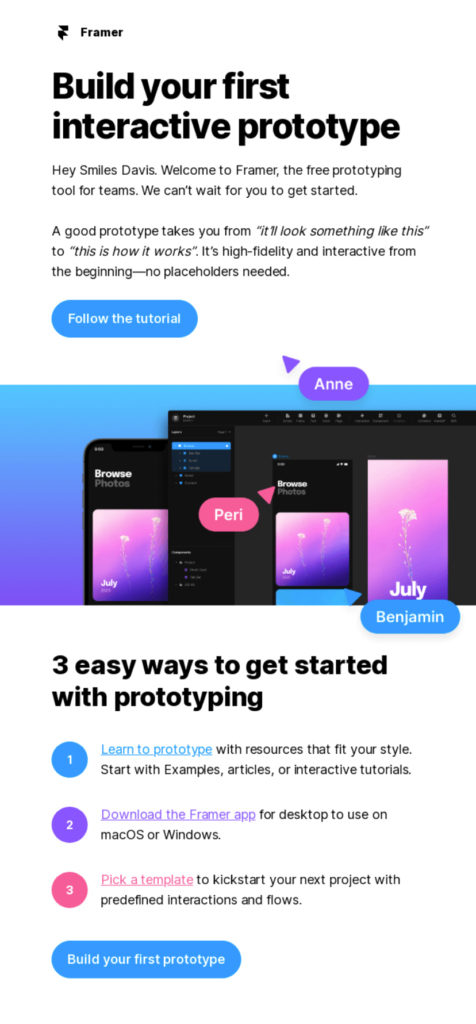
2. Email Newsletters
Your regular email newlsetters act as great drip campaigns to help build a stronger relationship with your subscribers. Sharing value-add content like industry news, company updates, promotions, and other relevant information helps keeps your brand top-of-mind.
B2B Email Newsletter Example
Take this email example from Namecheap, their monthly newsletter to their subscribers features helpful blog articles, tips, guides and even customer spotlight to help cement their brand as a thought leader in their industry.

3. Survey/Feedback Emails
These emails are used to collect feedback or opinions from customers or subscribers. They can be sent after purchase or interaction with the company, including a survey or a request for feedback.
B2B Feedback Email Example
Feedback emails don’t need to be fancy. Remember your target audience is most likely short on time so you want to keep it snappy. Simply expressing how much you value your subscribers feeedback can spark enagagement, especially if you’ve built a good relationship with them overtime. In this Shopify example they use both personalisation and a competition as an incentive to draw subscribers in.
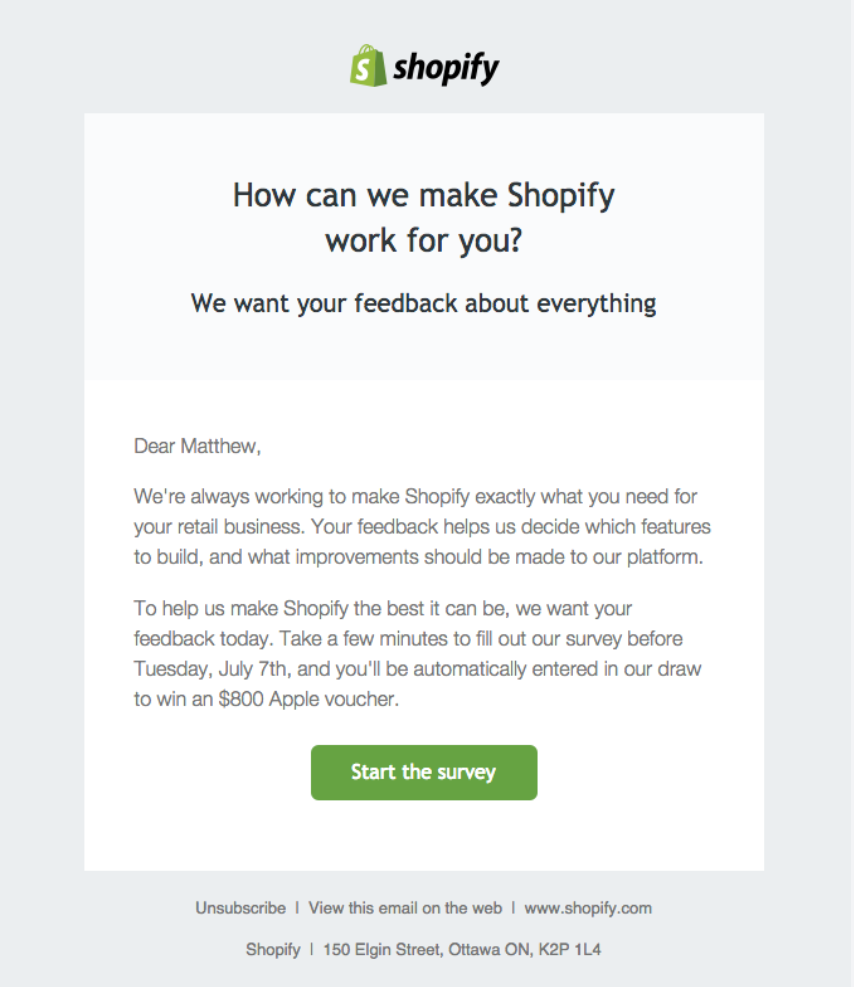
4. Announcement Emails
These are used to share news or updates about the company or product, such as a product launch, an upcoming event, or a change in company leadership. They can also be used to promote a sale or discount.
B2B Announcement Email Example
Asana builds subscriber anticipation by announcing features that are coming soon, listing the benefits they can look forward to, and even providing resources to show customers how they can make the most of their account.
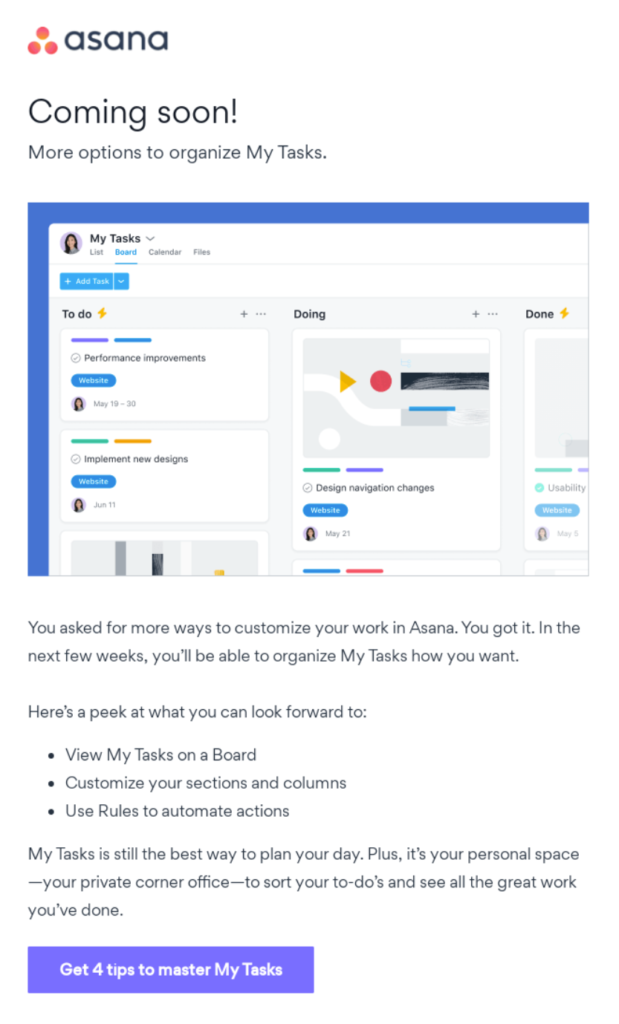
5. Event/Webinar Invitations
These emails invite subscribers or customers to attend an upcoming event or webinar. They can include event details, registration information, benefits of attending and a brief overview of attendees’ expectations.
B2B Event Invitation Email Example
Another way to increase the hype around your event is to tease subscribers what’s to come. For example Litmus gives their subscribers a preview of some of the headlining speakers to help drive interest.
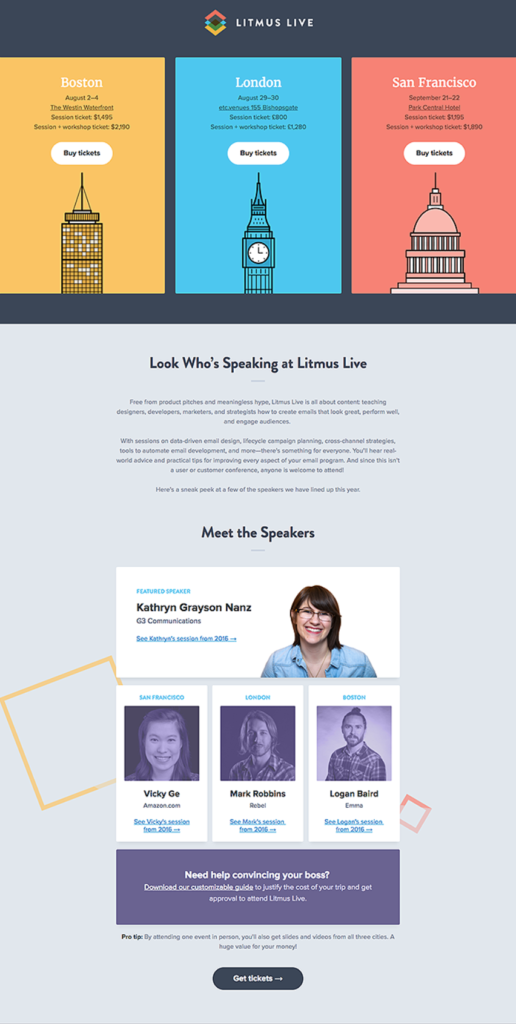
6. Re-engagement Emails
These are sent to subscribers or customers who have been inactive. The aim of these emails is to entice inactive subscribers to to re-engage with the company or product. They can include a special offer or incentive to encourage further engagement.
B2B Re-engagement Email Example
Squarespace follows up trialists who haven’t upgraded to a paying account by gently reminding them their trial is coming to an end. While clearly displaying a CTA to upgrade, they also provide the option for customers to extend their trial. By providing this option you’ll be able to easily distinguish between quality leads who are engaging with your product and are more likely to upgrade in the near future.
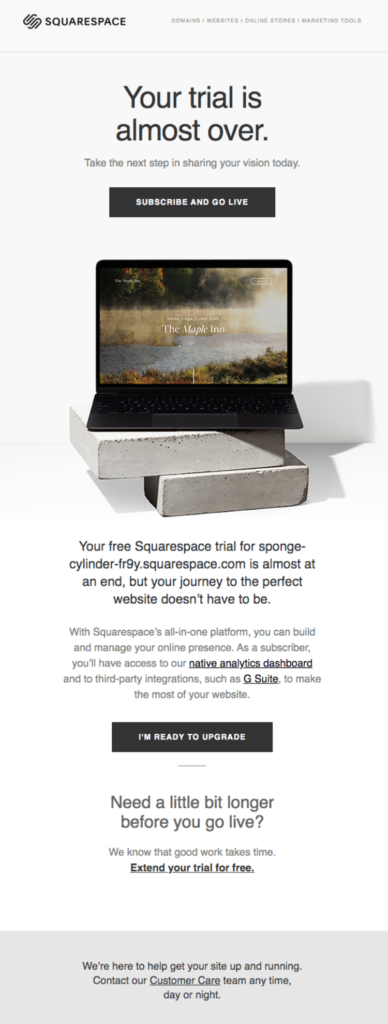
7. Gated Content Emails
Got any long-from content that’s just sitting idle? Gating content like ebooks, whitepapers, or reports can be a great way to capture more profile data for each subscriber. For example you could create conditional content in your emails that target subscribers from specific industries.
B2B Email Example with Gated Content
This example from Help Scout, is a perfect example of how to deliver gated content to your audience. Instead of pitching an over-the-top sales email to promote their 40-page handbook, they explain how their resource will help solve customer pain points.
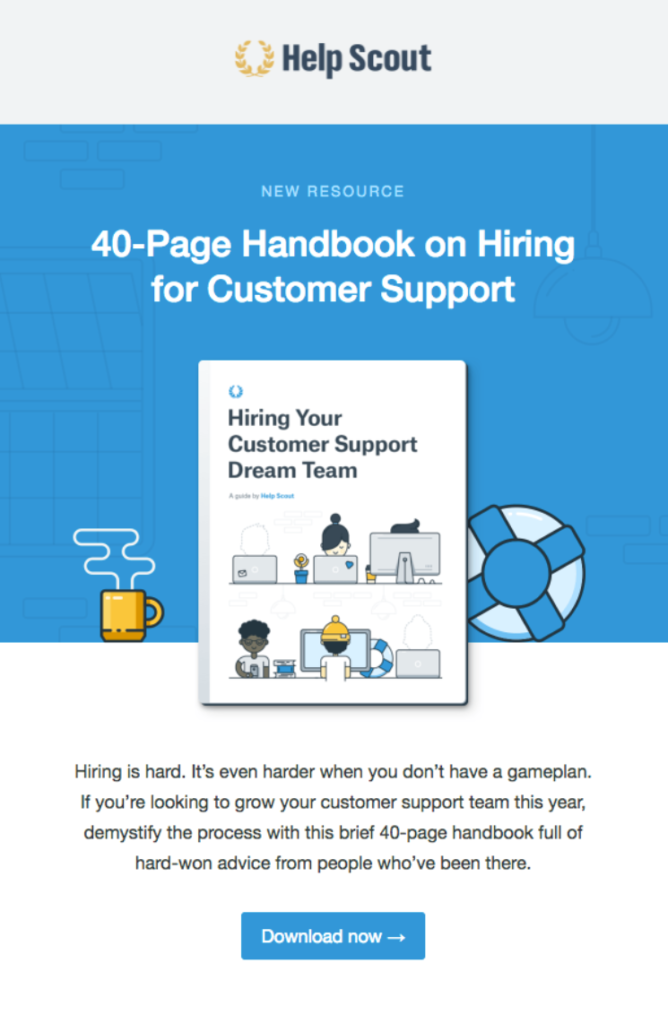
Ready to discover the secrets of Australia’s leading email marketing software? Sign up for a free trial and learn how to enhance your marketing campaigns with B2B email marketing services.


